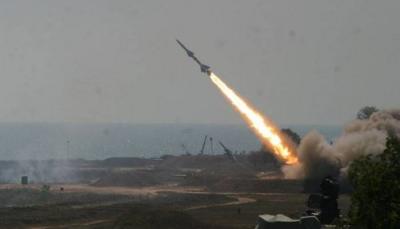Israeli forces and Lebanese "Hezbollah" have been exchanging increasingly heavy fire across the border since October 7, in the largest escalation in that area since the war fought by the Iranian-backed group and Israel in 2006. Hezbollah, one of the most heavily armed non-state groups in the world, is Iran's strongest ally in the "resistance axis," which includes the Palestinian Islamic Resistance Movement (Hamas), Iraqi factions, and others. Hassan Nasrallah, the group's Secretary-General, stated that it has 100,000 fighters. Below is an overview of some of Hezbollah's most important weapons, based on the group's data and security sources, weapon experts, and academic reports.
### Comprehensive Arsenal and Its Growth
Hezbollah's military power is based on a vast arsenal of rockets. Experts believe the Shiite Islamic group likely currently possesses over 100,000 rockets. Hezbollah claims to have missiles capable of striking all areas of Israel. Many of these rockets are unguided, but the group also possesses precision missiles, drones, anti-tank missiles, and missiles aimed at aircraft and ships. Iran is the primary supporter and arms supplier for Hezbollah. Experts say that the Islamic Republic sends weapons to the group via land routes through Iraq and Syria, where Tehran has close relations and influence. Many of the group's weapons are Iranian, Russian, or Chinese models.
### Ground Attack Missiles and Shells
Unguided rockets formed the bulk of Hezbollah's rocket arsenal in the recent war with Israel in 2006, when the group fired around four thousand rockets at Israel, most of which were Russian-made Katyusha rockets with a range of up to 30 kilometers. Hezbollah possesses Iranian types such as Raad rockets, Fajr rockets, and Zelzal rockets, which feature stronger warheads and longer ranges than Katyushas. Nasrallah noted that the most significant change in the group's arsenal since 2006 has been the expansion of their precision guidance systems. Last year, he claimed that Hezbollah has the capability to equip thousands of rockets with guidance systems to transform them into precision missiles within Lebanon. This expands Hezbollah's reach to more Israeli territory and may enable the group to hit more specific targets, such as critical infrastructure and military sites. Referring to the damage it could cause now, Nasrallah implicitly threatened in 2016 that Hezbollah could strike ammonia containers in the coastal city of Haifa in northern Israel, stating that the result would be "like a nuclear bomb."
### Anti-Tank Missiles
Hezbollah extensively used guided anti-tank missiles in the 2006 war. They deployed guided missiles again in the latest round of fighting, targeting Israeli positions along the border. During the recent escalation, Israel claimed it responded to anti-tank missiles. Hezbollah released footage claiming it showed direct hits on Israeli tanks and other military vehicles since October 7. The videos also show guided strikes on military facilities on the Israeli side of the border.
### Anti-Aircraft Missiles
On October 29, Hezbollah announced that it had shot down an Israeli drone over southern Lebanon with a surface-to-air missile, marking the first time it had reported such an incident. There was no comment from Israel regarding this announcement, but the Israeli military stated the day before that it had thwarted an attempt to launch a surface-to-air missile at an Israeli drone and retaliated by striking the missile launch site without disclosing its location. Experts have previously stated that Hezbollah possesses shoulder-fired anti-aircraft missiles in its arsenal.
### Anti-Ship Missiles
Hezbollah first demonstrated that it had anti-ship missiles in 2006 when it struck an Israeli warship 16 kilometers off the coast, resulting in the deaths of four Israelis and damaging the vessel. Since then, Hezbollah has released video footage claiming to show more of those weapons used in 2006. It stated that future targets could include gas infrastructure off the coast of Israel.
### Drones
Hezbollah's drones, which it claims include locally assembled Ayoub and Marsad aircraft, are primarily used for reconnaissance. However, they can potentially be equipped with a small payload of munitions. Experts point out that the drones, which can be produced cheaply and in large quantities, could be used to wear down Israel's air defense system (Iron Dome). In September, Israel accused Iran of building a drone landing site in southern Lebanon that could be used for launching attacks. A non-Israeli source familiar with the site indicated that it could accommodate large drones that might be armed, based on Iranian design.




